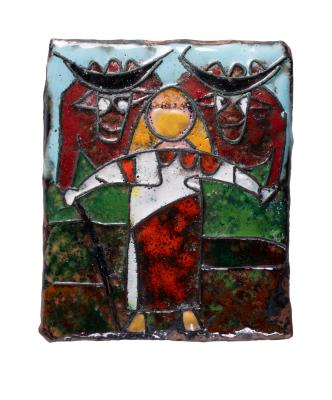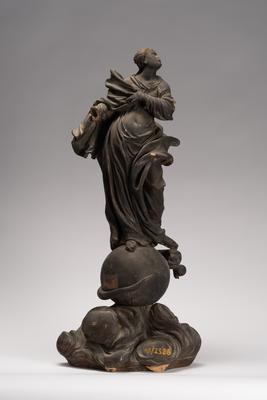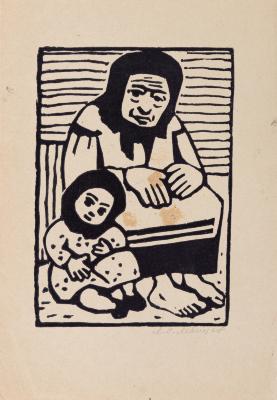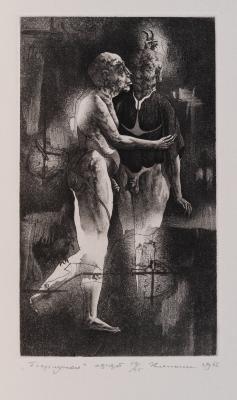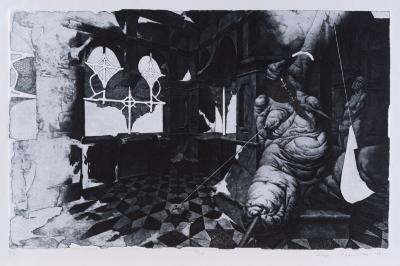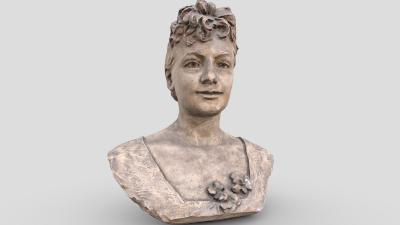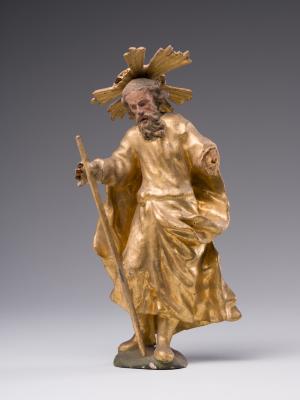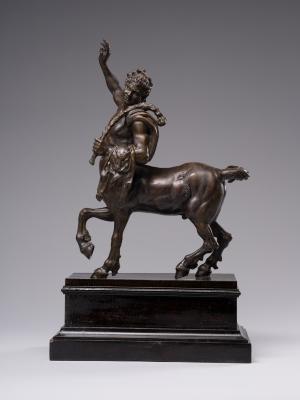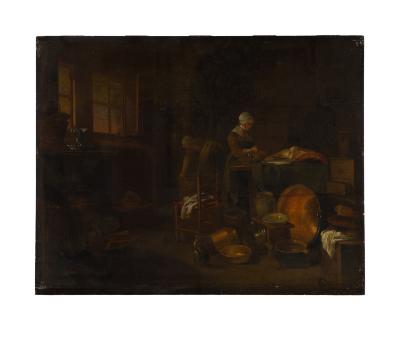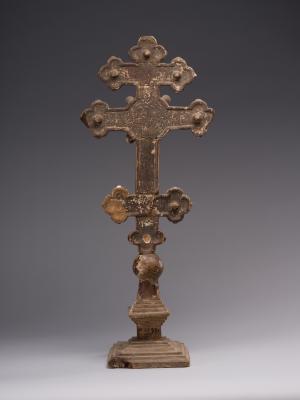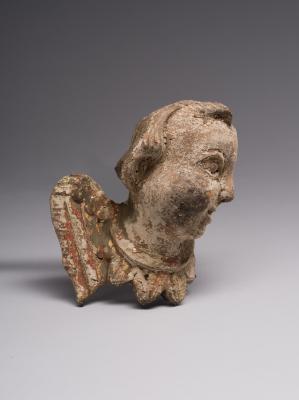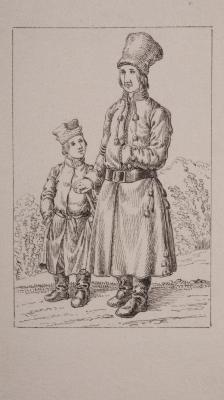The work is from the Roman series. The composition is known from the album Nuova Raccolta di Cinquanta Costumi Pittoreschi (New Collection of Fifty Picturesque Costumes) published by Giovanni Scudellari in Rome in 1817. The next version of the engraving with a similar name but a different composition was issued in 1820. The Lviv engraving belongs to the first version. A young woman is sitting on a stone and breastfeeding a baby. Consumed by his thoughts, a shepherd stands beside her and leans on a stick. He wears a black hat, a grey jacket over a red vest, yellow trousers, white stockings, and black shoes. The woman is dressed in a white shirt, a blue vest, and a long pink skirt; there is a wide headscarf on her head, and there are chiocia shoes on her feet. She holds the baby on her knees and looks calmly at the shepherd. The action is taking place on one of the hills. The trees, a citadel on a hill, a mountain top, and a cloudless sky serve as the background of the composition. To the right of the shepherd, there is a rock cliff. This is one of the few works of the Lviv series performed in 1817.
Ciociaria is a region situated south of Rome. It became widely known in the middle of the 20th century due to the novel "La Ciociara"/ "Two Women" by A. Moravia and the film of the same name by V. de Sica.







